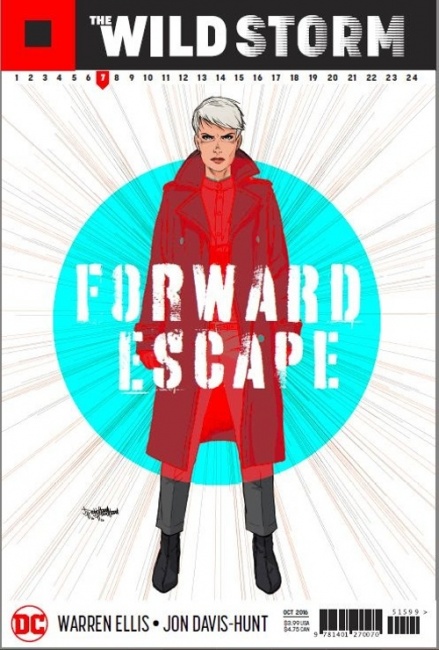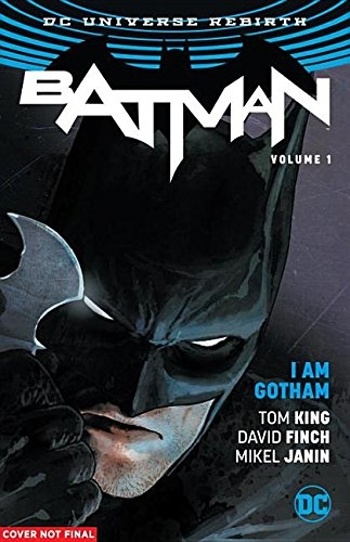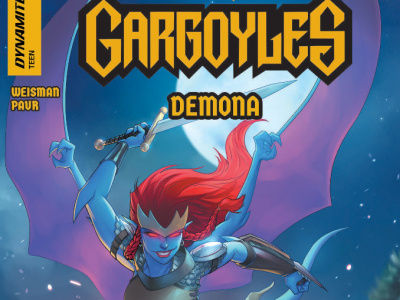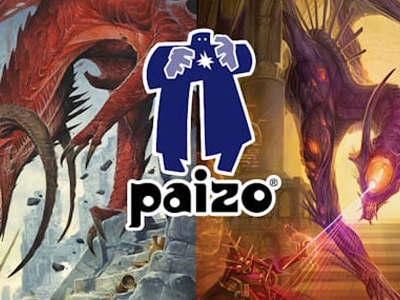We talked to DC Co-Publishers Jim Lee and Dan DiDio at New York Comic Con to catch up on pop-up imprints, DC’s change in strategy regarding creator exclusives, and the strategy on collections in the wake of the Rebirth launch.
Let’s start with the new pop-up imprint, from your old company, Wildstorm. This is the second of your pop-up imprints (see "Warren Ellis to 'Curate' Pop-Up WildStorm Imprint for DC"). Where did that idea come from?
Jim Lee: The first one came from Gerard Way working with then Executive Editor Shelly Bond from Vertigo, the idea that he had the desire to work on certain characters. He wanted to do his very different take on them. And we realized very quickly that this will only work if he’s heavily involved, leading the way creatively and that ultimately, once he’s no longer involved, it might not make sense to continue in that direction with the characters. So in that sense, it’s like a pop-up store, or pop-up performance, or a pop-up art gallery. It’s really something created very quickly out of creative passion, and it’s something we will do for as long as that person is interested and wanting to take that creative journey.
When we approached Warren [Ellis] about doing this, it had a lot of similarities with what we did with Gerard and Young Animal, in that Warren has a very specific take on the Wildstorm universe, one of the most commercial takes, one of the most interesting, creative takes. I always felt that this would only work if he’s involved, so that’s why we chose to characterize it that way and really built it around his name and his vision.
Did you and DC approach Warren?
Lee: I’ve been approaching Warren for a long time. It’s a Herculean quest I’ve had for years. I finally wore him down and got him to come back.
DC has announced about 16 or 17 creator exclusives this year (see "DC Adds Sam Humphries to Roster with Exclusive Contract"). It seemed like post-crash, 2009-2010, nobody was doing any exclusives. There were fewer books, less work to be done, and it seemed like the feeling from the big publishers that you didn’t need to do the exclusives to get the talent you wanted because there was a lot of talent available. Now it seems like that’s different. Can you talk about that change in strategy?
Dan DiDio: I think the change in strategy comes from the fact that there are so many options for the creators these days, and there’s so many ways to be pulled. It’s not just about too many options in creating comics but conventions as well. We have people who are traveling constantly that are basically able to build a career just going to conventions. What we needed to do is identify the talent that really had the sensibilities that we were looking for.
When we relaunched Rebirth, we went in with a very clear mindset of the type of story we wanted to tell. Geoff Johns took a lot of time talking with writers. Because he was spending all this time, we decided we wanted to put these people under contract. He was spending time to help nurture them, to help build them, to discuss ideas and ways we wanted to work and we were in agreement on how to do it. They’re willing to invest their time at DC. We wanted to show that equal investment back at them, and that’s why we wanted to put some of the folks on the contract.
The other thing is to remove that distraction. For any freelancer, you never know where your next job is, and as soon as one job ends you’re out of work. People are always looking for work as they’re working. The last thing we want is have people constantly hearing about another cover to do here, another book to do there, three more titles over there, and being distracted. It might be something really interesting that they might want to do, but we want them focused on DC. So this is a way to keep everybody focused on DC.
Other than an assured flow of work, are there any other benefits to the creator in your exclusive deals?DiDio: It’s guaranteed work; it’s guaranteed income; I’ve had creators come to me and say, "I can get a mortgage on a house because I can show a contract for guaranteed work for the next two to three years." That level of stability has allowed them to be a little more financially secure.
Lee: I don’t think you go into particulars above and beyond that, but it obviously has to be worth their while both financially and from a creative point of view, and the fact that we have multiple imprints that they can work on in the DC Universe proper but also launch and have the full support of the company behind their own creator-owned properties, I think, is something that is attractive and we definitely make it part of the pitch and part of the deal.
So you’re talking about Vertigo?
Lee: Yes. But it could also be Young Animal, other future imprints, or Earth One -- whatever they’re interested in doing we usually have a place for it or we’ll make a place for it. That’s something that has to happen. If you’re tying up a creator on all the projects they want to do, they want to be assured that if they have an idea that might be very different from working on the DC Universe proper, that they’ll have the home for it and have the full support of the company behind it.
You started soliciting the Rebirth collections in January, which is a shorter turnaround time than when books normally finish, is that right?
DiDio: The start is on our usual turnaround for collections. What you see is part of an acceleration because of the double ships. It’ll seem like collections are accelerated only because of the double ships.
Are you doing fewer collections of the comics that were released right before Rebirth -- because you’ve got Rebirth stuff coming through faster?
DiDio: Not at all. We have a lot of great material coming out up until Rebirth, so all of that material is still going to be collected. We’re still very close to being one for one collection from periodical.
Lee: The fastest part of our business that is growing is collected editions, it’s the back library of material, so it would be foolish to slow that down. There’s a great demand for our characters and complete stories and people get the fact that you can change continuities, and tonalities, but at the end of the day, they want great stories. They can accept The Killing Joke and understand that that is continuity prior to New 52 and collect a Rebirth trade, but still want a New 52 trade, because these are really cool stories that collect really awesome storylines featuring their favorite characters.
We’re about four months further into Rebirth than when we talked in July (see "ICv2 Interview: Jim Lee and Dan DiDio at San Diego Comic-Con - Part 1"). Any observations on the trend lines since then and how things are going?
DiDio: The erosion across the line has been slower than we expected. We weren’t sure if the double-ships were going to accelerate seeing books come down to a lower level, but quite honestly, the double-ships have worked extraordinarily well for us and more importantly, everything seems to be holding at a much better pace. That’s one of the reasons why when you see us launching only three new titles in February, there’s no sense of urgency to replace any of the line. We’re just supplementing it with books that we think have the same level of salability as the books that we started with.
Lee: We do projections of where we think issues four, five and seven should be for these books. And part of that also is looking at the line and looking at average sales. That’s a critical number. It’s not enough to have a lot of books because if the books aren’t selling well you’re going to be a lot less profitable than if you’re doing fewer books that are selling better on average obviously. So a key factor for us is the average unit sales for a particular title in a particular imprint and how can we elevate that, and what resources we have. The resources we have, in terms of headcount in editorial, our production capabilities and figuring out how we can maximize the number of books we can do at the highest average sales.
Are you ending up with about the same monthly title count as with the New 52, given double-ships?
Lee: Probably a little less. We started with 17 double-ship books.
DiDio: The number of issues we put out is the same, but there are less, because of Rebirth, in the core line. But things like the Wildstorm material and Hanna-Barbera and Young Animal is really what’s rounding out our line right now. What you don’t see in the core line is actually being augmented by these other little pop-up imprints that are coming out.
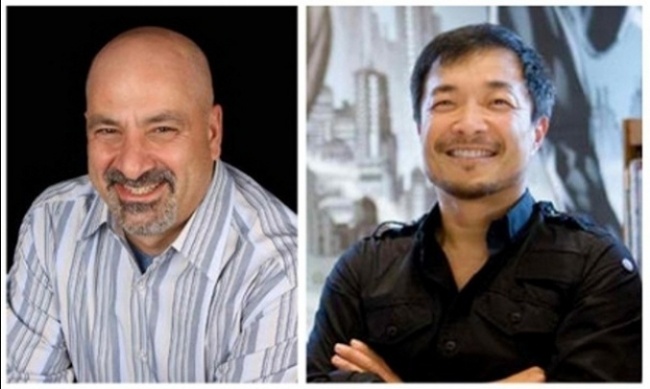
Wildstorm, Creator Exclusives, Rebirth Collections, More
Posted by Milton Griepp on October 21, 2016 @ 2:45 am CT
MORE COMICS
Ten Speed Graphic Fall 2025 Catalog
July 11, 2025
Ten Speed Graphic has released its Fall 2025 catalog.
From Dynamite Entertainment
July 11, 2025
Check out the preview for Gargoyles: Demona #1, published by Dynamite Entertainment.
MORE NEWS
At Recent Heritage Auction; Frazetta Original Comic Art Closes Over $1 Million
July 11, 2025
An Action Comics #1 cover wrap hammered at over $400,000 at Heritage Auctions' June 26-29, 2025 Comic & Comic Art Signature Auction.
As Chief Growth Officer
July 11, 2025
Paizo, Inc. has hired Christian Moore as their Chief Growth Officer, the company announced.




